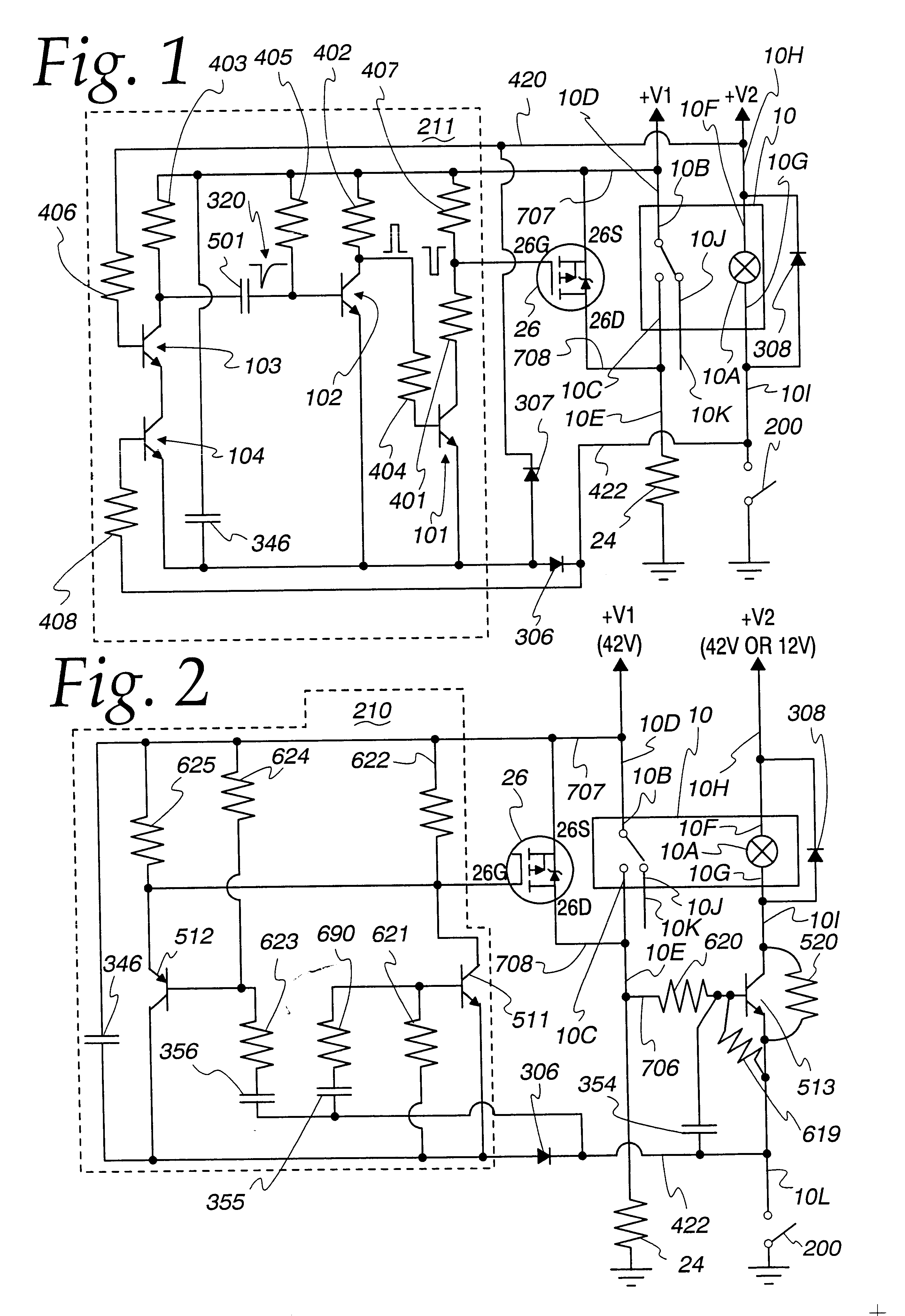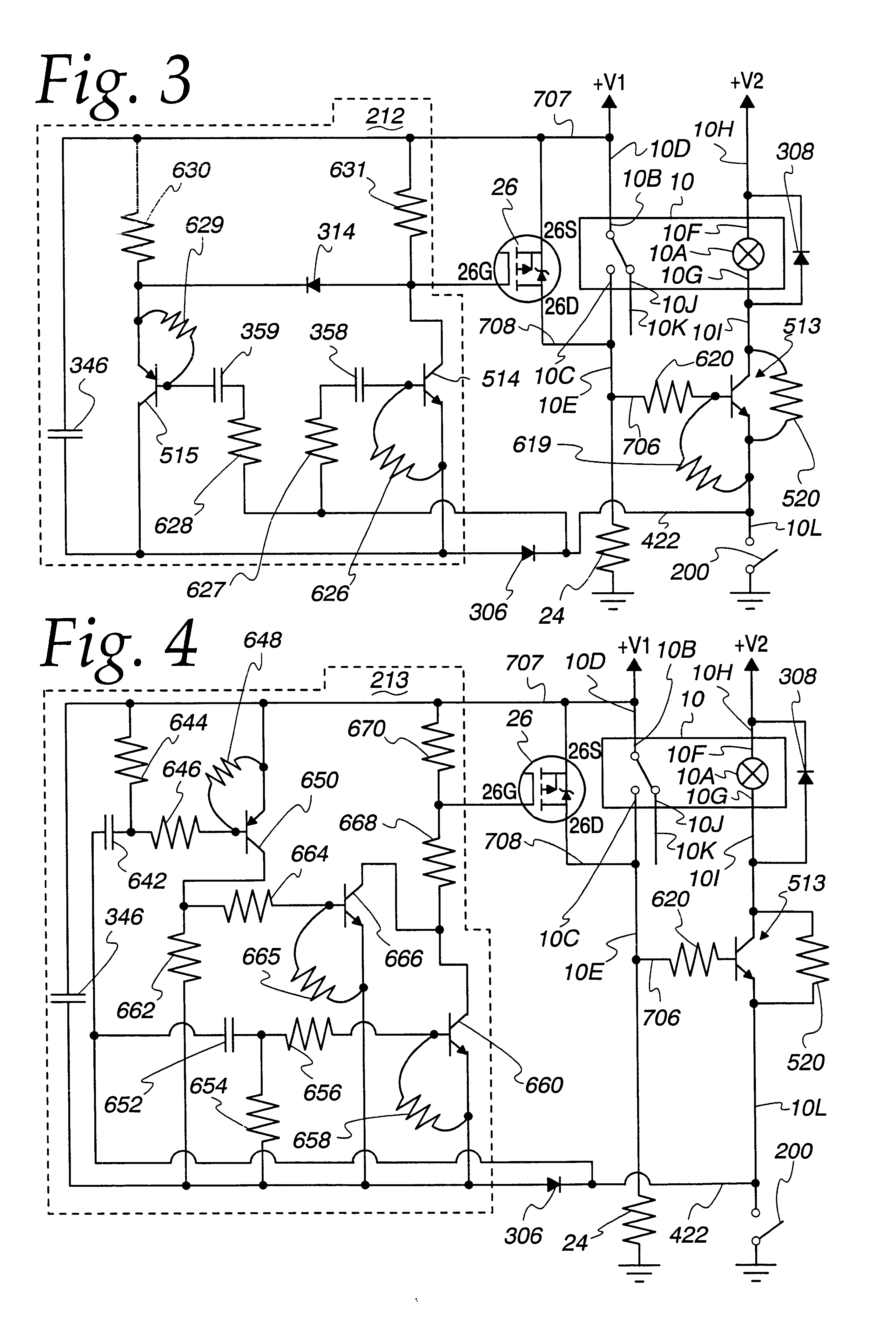Circuit for operating voltage range extension for a relay
a relay and operating voltage technology, applied in the direction of circuit-breaking switches, coupling device connections, pulse techniques, etc., can solve the problems of transistor amplifiers, imperfect switches, and contact arcing still occurring, and the contact can be degraded and eventual destruction of contacts
- Summary
- Abstract
- Description
- Claims
- Application Information
AI Technical Summary
Benefits of technology
Problems solved by technology
Method used
Image
Examples
Embodiment Construction
Among other things, the circuitry of the present invention is intended to enable a low-voltage relay 10 to be used safely in higher-voltage environments where the close spacing of the relay contacts 10B and 10C to each other when open might otherwise produce prolonged arcing which could cause a fire if the arc suppression mechanism described below were not present or were to fail. Since the majority of the damage to the contacts 10B and 10C of a relay 10 operating in a high voltage environment occurs during arcing upon the opening of the relay contacts 10B and 10C, as opposed to the closing of the contacts 10B and 10C, the present invention preferably is arranged to provide for arc suppression during the opening of the contacts 10B and 10C, and not necessarily during the closure of the contacts 10B and 10C. Some arcing when the contacts 10B and 10C close can be beneficial in keeping the relay contacts clean and fully operative.
FIG. 1 shows one embodiment of a circuit diagram for an ...
PUM
 Login to View More
Login to View More Abstract
Description
Claims
Application Information
 Login to View More
Login to View More - R&D
- Intellectual Property
- Life Sciences
- Materials
- Tech Scout
- Unparalleled Data Quality
- Higher Quality Content
- 60% Fewer Hallucinations
Browse by: Latest US Patents, China's latest patents, Technical Efficacy Thesaurus, Application Domain, Technology Topic, Popular Technical Reports.
© 2025 PatSnap. All rights reserved.Legal|Privacy policy|Modern Slavery Act Transparency Statement|Sitemap|About US| Contact US: help@patsnap.com



